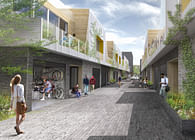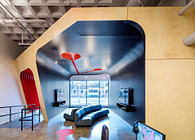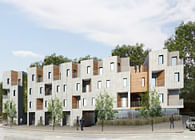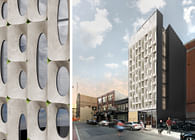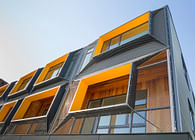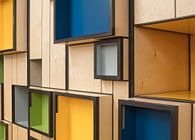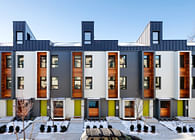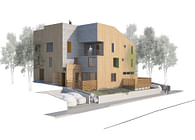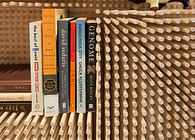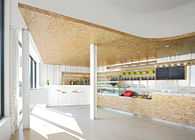
Boston, MA
Grow Box is a 1,975 sf home in Lexington, MA, designed for an MIT University Professor of Engineering, his wife, and their young son. The landscape surrounding the house was (and still is) in pristine condition, with elaborate plantings and over 40 different varieties of Japanese maple trees painstakingly cultivated and maintained by the clients. The extents of the existing gardens limited the footprint of the new house, but inspired an architecture that utilizes landscape to affect space that expands beyond the physical limits of the house. The resulting design is a compact volume penetrated by slot gardens and entry decks that both define space within the house, and erode the boundary between interior and exterior. Grow Box is a 1,975 sf home in Lexington, MA, designed for an MIT University Professor of Engineering, his wife, and their young son. The landscape surrounding the house was (and still is) in pristine condition, with elaborate plantings and over 40 different varieties of Japanese maple trees painstakingly cultivated and maintained by the clients. The extents of the existing gardens limited the footprint of the new house, but inspired an architecture that utilizes landscape to affect space that expands beyond the physical limits of the house. The resulting design is a compact volume penetrated by slot gardens and entry decks that both define space within the house, and erode the boundary between interior and exterior.
In an effort to elaborate on our interests in social threshold and expanded boundary conditions, we incorporated six recessed exterior gardens within the interior of this tight 1,975 sf two-story ‘box’ wrapped in Cor-ten steel. Each recessed garden expands and negotiates a new type of relationship between standard programs: bed and bath, kitchen and living, upstairs and downstairs. These pockets of exterior space nested within the interior create the perception of spatial expansion while paradoxically compressing it. These spaces pursue a curious connection and social dynamic between the users within these various corners of the house. A spatial buffer is able to amplify and frame through transparence and spatial layering.
The slot recessed gardens are organized geometrically by one five foot by six foot central “landlocked” courtyard garden on the first level that contains a single Himalayan birch tree. This garden, which will collect rain in the summer and snow in the winter, underlines one’s experience of the elements as the literal and metaphorical centerpiece of the home. Entryways on each facade provide ready access to the yard, while copious operable windows, sliding doors, and framed views reinforce the reciprocal relationship between house and garden. On the exterior, the visual contrast between the hard geometry of the house and the sinuous landscape is both enhanced and obfuscated by the raw hue of the weathering steel panels that comprise the house cladding. Large areas of glazing surrounding the slot gardens and floor to ceiling windows reflect the surrounding trees and plantings, further blurring the distinction between architecture and nature.
Status: Built
Location: Lexington, MA, US
Firm Role: Architect / Designer
Additional Credits: General Contractor: Evergreen Group Company Inc.
Structural Engineer: Evan Hankin, PE
Steel Fabrication: Ramos Iron Work
Photography: John Horner Photography


